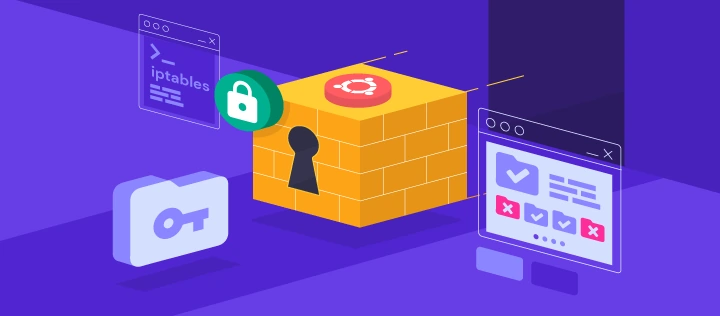Converting String to Uint8Array & Vice-Versa
When working with JavaScript, especially in scenarios involving binary data or text encoding, you may need to convert strings to Uint8Array and vice-versa. This guide will walk you through various methods to achieve this, along with code examples and best practices.
Why Convert Between String and Uint8Array?
A Uint8Array is a typed array that represents an array of 8-bit unsigned integers. It’s commonly used for handling binary data, such as file processing, network communication, or cryptographic operations. Converting between strings and Uint8Array is essential when dealing with text encoding, decoding, or manipulating raw binary data.
Converting String to Uint8Array
1. Using TextEncoder (Modern and Recommended)
The TextEncoder API is the most straightforward and efficient way to convert a string to a Uint8Array. It handles encoding automatically.
const str = 'Hello, World!';
const encoder = new TextEncoder();
const uint8Array = encoder.encode(str);
console.log(uint8Array); // Output: Uint8Array(13) [72, 101, 108, 108, 111, 44, 32, 87, 111, 114, 108, 100, 33]
Pros:
- Simple and concise.
- Handles UTF-8 encoding by default.
Resources:
2. Using charCodeAt() and Uint8Array Constructor
If you need more control or are working in an environment without TextEncoder, you can manually convert each character to its Unicode value.
const str = 'Hello, World!';
const uint8Array = new Uint8Array(str.length);
for (let i = 0; i < str.length; i++) {
uint8Array[i] = str.charCodeAt(i);
}
console.log(uint8Array); // Output: Uint8Array(13) [72, 101, 108, 108, 111, 44, 32, 87, 111, 114, 108, 100, 33]
Pros:
- Works in all environments.
- No external APIs required.
3. Using charCodeAt() and Array.prototype.map()
This method uses functional programming to achieve the same result as above.
const str = 'Hello, World!';
const uint8Array = new Uint8Array([...str].map((c) => c.charCodeAt(0)));
console.log(uint8Array); // Output: Uint8Array(13) [72, 101, 108, 108, 111, 44, 32, 87, 111, 114, 108, 100, 33]
Pros:
- Concise and readable.
- Leverages JavaScript’s functional programming features.
4. Using Buffer (Node.js Only)
In Node.js, the Buffer class provides a simple way to handle binary data.
const str = 'Hello, World!';
const uint8Array = Buffer.from(str, 'utf-8');
console.log(uint8Array); // Output: <Buffer 48 65 6c 6c 6f 2c 20 57 6f 72 6c 64 21>
Pros:
- Optimized for Node.js environments.
- Supports multiple encodings.
Resources:
5. Using ArrayBuffer and DataView
For advanced use cases, you can use ArrayBuffer and DataView to manually manipulate binary data.
const str = 'Hello, World!';
const arrayBuffer = new ArrayBuffer(str.length);
const dataView = new DataView(arrayBuffer);
for (let i = 0; i < str.length; i++) {
dataView.setUint8(i, str.charCodeAt(i));
}
const uint8Array = new Uint8Array(arrayBuffer);
console.log(uint8Array); // Output: Uint8Array(13) [72, 101, 108, 108, 111, 44, 32, 87, 111, 114, 108, 100, 33]
Pros:
- Provides fine-grained control over binary data.
- Useful for low-level operations.
Converting Uint8Array to String
1. Using TextDecoder (Modern and Recommended)
The TextDecoder API is the easiest way to convert a Uint8Array back to a string.
const uint8Array = new Uint8Array([72, 101, 108, 108, 111, 44, 32, 87, 111, 114, 108, 100, 33]);
const decoder = new TextDecoder();
const str = decoder.decode(uint8Array);
console.log(str); // Output: "Hello, World!"
Pros:
- Simple and efficient.
- Handles UTF-8 decoding by default.
Resources:
2. Using String.fromCharCode() and Array.prototype.map()
This method manually converts each byte to a character.
const uint8Array = new Uint8Array([72, 101, 108, 108, 111, 44, 32, 87, 111, 114, 108, 100, 33]);
const str = Array.from(uint8Array, (c) => String.fromCharCode(c)).join('');
console.log(str); // Output: "Hello, World!"
Pros:
- Works in all environments.
- No external APIs required.
3. Using Buffer (Node.js Only)
In Node.js, you can use Buffer to convert a Uint8Array to a string.
const uint8Array = new Uint8Array([72, 101, 108, 108, 111, 44, 32, 87, 111, 114, 108, 100, 33]);
const str = Buffer.from(uint8Array).toString('utf-8');
console.log(str); // Output: "Hello, World!"
Pros:
- Optimized for Node.js environments.
- Supports multiple encodings.
4. Using Array.prototype.reduce()
This method uses reduce to concatenate characters into a string.
const uint8Array = new Uint8Array([72, 101, 108, 108, 111, 44, 32, 87, 111, 114, 108, 100, 33]);
const str = uint8Array.reduce((acc, c) => acc + String.fromCharCode(c), '');
console.log(str); // Output: "Hello, World!"
Pros:
- Functional programming approach.
- Concise and readable.
Best Practices
- Use
TextEncoderandTextDecoderfor Modern Applications: These APIs are efficient, standardized, and handle UTF-8 encoding/decoding seamlessly. - Fallback for Older Environments: If you need to support older browsers or environments, use manual methods like
charCodeAt()andString.fromCharCode(). - Node.js Optimization: In Node.js, prefer
Bufferfor its performance and ease of use.
Conclusion
Converting between strings and Uint8Array is a common task in JavaScript, especially when dealing with binary data or text encoding. By using the methods outlined in this guide, you can handle these conversions efficiently and effectively. Whether you’re working in a browser or Node.js environment, there’s a solution for every use case.
For further reading, check out these resources:
Happy coding! 🚀
Latest blog posts
Explore the world of programming and cybersecurity through our curated collection of blog posts. From cutting-edge coding trends to the latest cyber threats and defense strategies, we've got you covered.

